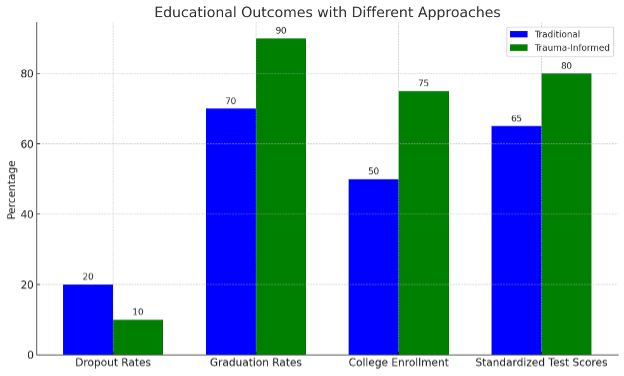The energy industry is at a pivotal moment, seeking skilled workers to power our future. CTE programs offer a critical pathway to connect students with careers in this vital sector, and strategic partnerships are helping educators bridge classroom learning with real-world experience. Together we can empower the next generation to meet workforce challenges.
Energy powers our lives, our communities and our economy — making the energy industry a critical driver of future progress. And the demand for skilled workers has never been higher. In fact, wind turbine service technicians and solar photovoltaic installers top the list of fastest growing occupations from the U.S. Department of Labor’s Bureau of Labor Statistics.
The energy industry has an opportunity to connect students to vital careers. The solution lies in meeting learners where they are and giving educators the resources to understand, adopt and engage in modern energy curricula. Career and technical education (CTE) can help students prepare for careers in energy.
Why energy curricula is critical
The energy landscape is changing. Renewable energy sources like hydropower and solar are expanding in scope and capacity, and demand for power is increased overall. These are just two examples. The workforce needs to be proficient in emerging technologies that will shape our future.
The energy industry faces labor shortages, a retiring workforce and a skills gap in key knowledge areas. Utilities and renewable energy providers are challenged to “secure a larger workforce, develop digital and project development skills, and hire for completely new roles as they diversify their renewable portfolios” (Motyka et al., 2024). Educators and industry partners must work together to raise the visibility of energy careers and provide specialized learning experiences so that students can rise to the challenge.
How the energy industry supports educators
The energy industry recognizes the urgency of filling historic hiring demands and is taking on major collaboration initiatives to help educators. The Center for Energy Workforce Development (CEWD), a national neutral energy workforce nonprofit, is a longtime leader and convener of the industry to ensure a skilled, diverse workforce pipeline. The organization develops curricula, shares resources and pushes career awareness initiatives — like Get Into Energy and Troops to Energy Jobs — to help students and career changers navigate pathways into the industry.
At the heart of CEWD’s educator programming is a deep understanding of core competency standards within the energy industry. Content standards are available as road maps to support primary, secondary and postsecondary learning, meeting students at every level with age-appropriate content. Developed by CEWD and a diverse group of subject matter experts, the national frameworks and corresponding competencies aim to support curriculum development nationwide.
CEWD also offers a robust curriculum called Energy Industry Fundamentals (EIF) 2.0. This equips educators with tools to teach energy pathways for high school learners and beyond. The free virtual course offers 120 hours of instruction and comes complete with labs, interactive exercises, pacing guides, and lesson plans to connect students with foundational knowledge of the industry.
Connecting with educators through partnerships
Strategic partnerships connecting educators to the energy industry can bridge the gap between classroom learning and real-world application. These relationships pave the way to enable students’ access to relevant, updated education. The importance of seizing opportunities to work together cannot be overstated.
Career and technical student organizations serve as channels to foster collaboration between industry leaders, educators and students. The National Council for Agricultural Education has been another strong partner to CEWD, providing thought leadership and counseling on how to best support educators. Through national and local events, these organizations and others provide platforms for students to showcase their skills in energy-related competitions, while also offering professional development opportunities for educators. Educators gain insights into industry trends and learn more about available careers in all sectors. By increasing career visibility in these ways, we can help ensure that content remains current and effective.
Beyond these nationally driven partnerships, direct collaboration between energy companies and educational institutions is essential. Companies can offer workshops, seminars and training sessions for educators, providing them with access to industry experts and cutting-edge technologies. These initiatives enhance educators’ knowledge and equip them with practical tools and resources to incorporate into their curricula.
Join the energy evolution!
Help cultivate the skilled workforce we so urgently need. The careers are rewarding, and innovation knows no bounds. Truly, the potential is limitless — and you get to guide your students here. We’re just getting started. By prioritizing and investing in comprehensive energy education, we can lay the foundation for a resilient future. We can empower the next generation to power our lives, communities and economy for decades to come.
Kristie Kelley serves as the director of workforce development at the Center for Energy Workforce Development.















